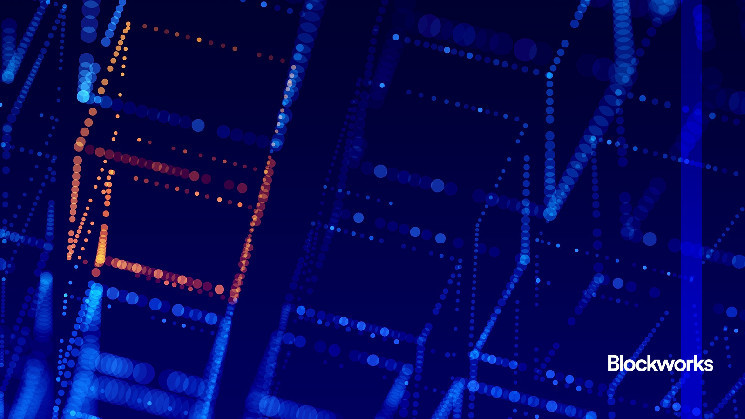Delta, a new layer-1 platform challenging the status quo for building high-throughput decentralized applications, has raised $11 million in funding.
The platform positions itself as a “network of networks” that seeks to break the traditional trade-off between blockchain sovereignty and interoperability, a nagging problem that many developers face today.
Delta’s funding round was led by Figment Capital and Maven 11, with contributions from Variant, DBA and other investors. (Blockworks co-founder Michael Ippolito is also an angel investor.)
The functional goals of Delta’s architecture are similar to those of the major rollup “clusters” — OP Superchain, the AggLayer or ZKsync Elastic Chain frameworks — all of which face interoperability challenges born from Ethereum’s rollup-centric roadmap.
Dapp developers often have to choose between two approaches: building within the confines of a single framework or creating an independent appchain that must retrofit interoperability solutions.
The new approach aims to combine the best of both worlds by offering developers local control over their environment while still maintaining global connectivity through the base layer, according to Ole Spjeldnaes, CEO of Repyh Labs, which is building Delta.
“Originally we thought that this is what Ethereum was going to be like — you wouldn’t need to have these local clusters,” Spjeldnaes told Blockworks.
Delta’s architecture separates execution and transaction ordering from data availability and settlement, offering theoretical advantages over both appchains and rollups, which typically require complex bridging solutions. In Delta, execution occurs within individual “domains,” which are akin to app-specific rollups or execution shards.
The key difference from, say, a ZKsync Elastic Chain, is that these domains retain complete power over their blockspace and can use any existing virtual machine or develop custom programs. However, Delta eschews Ethereum, and all its domains settle on a new decentralized base layer, which ensures shared global state and interoperability.
“Delta is a more bottoms up approach to achieving, first of all, stronger properties than what something like the ZK Elastic Chain can provide because it’s a single state machine,” Spjeldnaes said. “If Ethereum did not have to think about being backwards compatible and had had the foresight, this might have been what it would have ultimately looked like.”
Unlike Ethereum rollups, all assets within Delta’s network stay on the base layer, notes Myles O’Neil, Repyh’s chief product officer.
“There’s no real equivalent for this in rollup terminology,” O’Neil told Blockworks.
That has consequences for asset issuance and liquidity — for instance, a stablecoin gets issued once on the base layer and is automatically available for use in all domains.
Another standout feature of Delta is its use of zero-knowledge proof-based settlement integrated directly into the base layer, allowing domains to interoperate without any external coordination or intermediary bridges.

“There are a minimal number of things that need to be proven by all domains,” Spjeldnaes explained, but so long as they are following this set of what are called Delta’s “global laws,” they retain the flexibility to use whatever execution, sequencing or permissions model they want.
Domains generate a State Diff List (SDL), a compressed standardized format for state changes based on their own transaction ordering, and submit it to the base layer, along with proofs that the SDL doesn’t violate any global laws (or the domains own “local laws”). The state model prevents conflicts between each domains’ subset of state.
“We let the domains be opinionated about how much else they want to prove,” O’Neil said. “So if they want to be completely trustless, just like a ZK rollup, they can choose to prove their entire execution path.”
All domains will need to use a shared prover, which should be “the most efficient one for all” Spjeldnaes said. “The goal is really to maximize strong interop without infringing on the sovereignty of each domain,” he added.
Delta’s proof-of-stake validator set uses a leaderless and orderless consensus mechanism, known as Byzantine Reliable Broadcast (BRB), which Spjeldnaes compares to Sui’s Narwhal-Bullshark consensus algorithm.
“I think Sui is very elegant,” Spjeldnaes said. “They are able to just do ordering for those transactions that need ordering [but] that adds a ton of overhead — which you can tell by their benchmarks — you have Narwhal and then you have to add consensus on top of Narwhal, and that is really the bottleneck.”
BRB avoids this overhead, and Spjeldnaes noted the computation requirements for validators will be very low, because their main task is verifying proofs. By foregoing the need for global transaction ordering, the network scales linearly as more machines are added, Spjeldnaes said.
“We see this as being also a protocol which would scale quite well in terms of the number of validators, but we haven’t tested this yet, so we cannot really make a strong claim about it.”
Delta’s biggest problem will be how to bootstrap usage and bring in assets to yet another new layer-1 network. With the mainnet launch still over a year away, O’Neil said they’ll be going after both crypto natives and non-crypto developers from the fintech and Web2 world.
By taking on the shortcomings of current leading ecosystems like Ethereum and Solana, the team hopes to demonstrate the merits of a new paradigm.
“What a system would look like if you were to rebuild things from scratch,” O’Neil said.
 blockworks.co
blockworks.co
